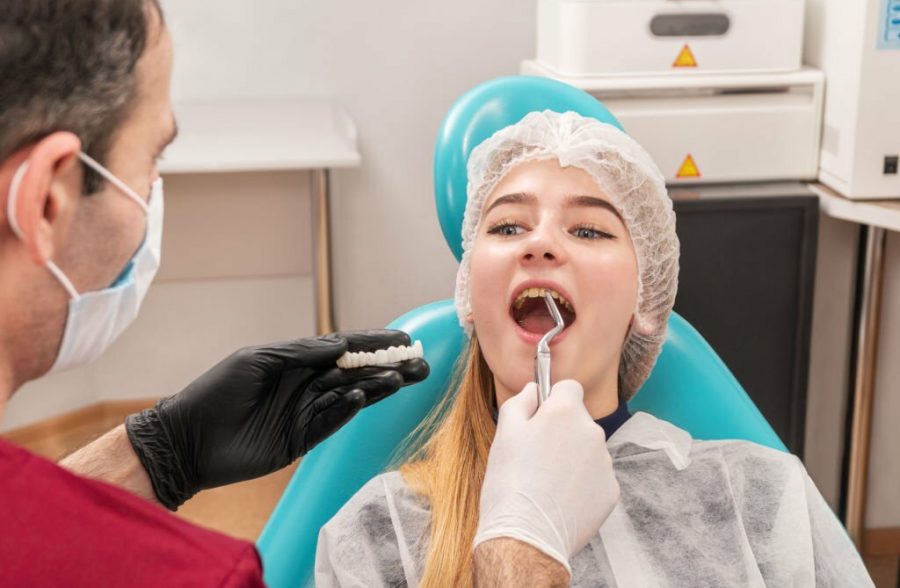Tooth loss is common! Nearly 178 million Americans have one or more missing teeth.
But does that mean you should stop smiling?
No! Today, we have numerous options for teeth replacement to remodel your style and boost your confidence.
In this blog, we take a closer look at:
- Common Causes Of Tooth Loss
- Your Options For Replacing A Lost Tooth
- What’s Right For You?
Let’s learn more about these options in the following sections.
Introduction:
A missing tooth can certainly impact your smile!
Whether it’s a result of severe tooth decay, injury, or gum disease, it can negatively impact your smile over time.
Such a situation often leaves you confused about your tooth replacement options. Keeping the same in mind, we’ve listed different options for replacing a tooth in the following sections.
But first, let’s understand more about the common causes of tooth loss.
Common Causes Of Tooth Loss
People lose teeth for a variety of reasons. Topping the list of reasons are tooth decay and gum disease.
Gum disease occurs when plaque accumulates along the gumline, causing gum tissue to become red and inflamed. Food particles left on the teeth promote bacteria in the mouth to create acid, which breaks enamel and produces cavities in the event of dental decay. If left untreated, these disorders might result in tooth and bone loss.
Interestingly, however, this is where dental replacement options enter as a safe option for you to make the most of your lost smile. Today, we have numerous options to replace lost or missing teeth.
Your Options For Replacing A Lost Tooth
When looking for missing tooth replacement options, you’ll find various options to restore your smile. Here’s an overview of the different replacement options you could use for your missing teeth:
Dental implants

First, we have dental implants, a leading teeth replacement option in the market today!
These appliances are a dependable alternative for a lost tooth that feels and looks like a natural option. Dental implants are a long-term solution for replacing a single tooth or many teeth in various places. If properly cared for, these teeth replacements can last a lifetime.
The procedure for installing your dental implant might be time-consuming. The process starts by replacing your natural roots with a post (metal screws) that is an anchor for the fake teeth put on top. After the screws are in place, your implant will need a few months to heal and fuse with the jawbone.
After the implant has healed entirely, your dentist will place a crown to give the appliance a natural feeling.
Here’s an overview of the pros and drawbacks of the dental implants treatment:
Implant-supported Bridge
Next, we have the implant-supported bridge. As the name suggests, this oral appliance comprises a bridge supported by implants. It is an excellent treatment for numerous lost teeth in a row.
In this method, the teeth in the center of the two ends are maintained in place without screws. While opting for an implant-supported bridge, you must understand that replacing individual teeth with a dental implant can be inefficient and time-consuming.
Here’s an overview of the pros and drawbacks of implant-supported bridge:
Tooth-supported Bridge
Next, we have a tooth-supported bridge, another excellent option for individuals who have lost multiple teeth. The process involves using the remaining teeth in your cavity to support the implantation of a bridge.
Instead of inserting double implants into your cavity, the tooth-supported bridge leverages your existing teeth to give a natural touch. Moreover, this process also includes a crown glued onto the teeth next to the lost ones. This missing tooth process is carried out over several visits.
Here’s an overview of the pros and drawbacks of implant-supported bridge:
Removable Partial Dentures
Removable partial dentures are a less complicated missing teeth replacement method. These appliances are an excellent option for those with a few missing teeth compared to a complete set of dentures.
Removable partial dentures are held into position to ensure that the fake teeth are retained in the proper areas. Since removable partial dentures can be removed, they are easier to maintain than other options.
Here’s an overview of the pros and drawbacks of removable partial dentures:
What’s Right For You?
The ones mentioned above are some of the best artificial teeth options you could opt for yourself. However, that’s not all. There are several options to replace a missing tooth, whether you’ve lost it to a gum disease, accident, or decay.
Each option has its list of pros, drawbacks, and qualifications. Therefore, ensure that you consult with your dentist and weigh your specific budget and needs to get the best option. All the best!
Takeaway
- Nearly 178 million Americans have one or more missing teeth.
- When looking for replacement tooth options, you’ll come across multiple appliances.
- Dental implants are one of the most popular tooth replacement options.
- Removable partial dentures are a less complicated missing teeth replacement method.

